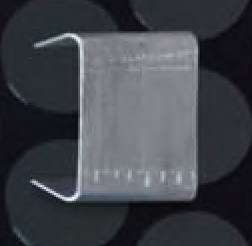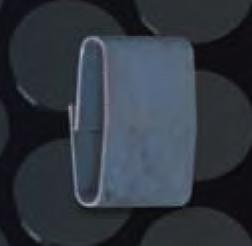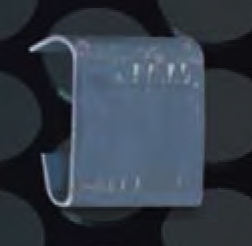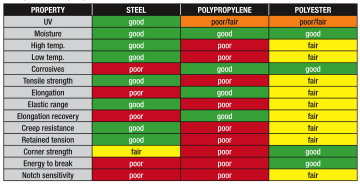
The science of strap selection
By Samuel Strapping Systems
General samuel strap strap selection strapping white paperA white paper handbook telling you everything you need to know about strapping and how to buy the right one for you.
Shipping is an essential part of any product-based business, but it comes with an assortment of risks. Of these, product damage is one of the most common and costly. Freight can shift while in transit or handling, or be jolted out of position by shocks or sudden movements.
Strapping helps alleviate this problem by providing a cost-efficient, readily available means of securing packages and pallet loads. There are many types of strapping available, such as steel, polyester, and polypropylene, each of them with their own gauges and recommended applications.
This handbook will explain the most common types of strapping, their advantages and disadvantages, and help you determine which strap is the right one for your needs.
What Is Strapping?
Strapping is a flat, flexible material that helps minimize product damage by keeping the load under tension. This tension prevents the load from shifting or slipping out of place. Additional edge protection can be added to protect corners and further stabilize the load.
Strapping fulfills five primary functions in the packaging process:
1. Unitizing
Bundles of product are assembled into an orderly stack or block. Strapping is then applied as needed to compress the stack together and therefore package it as one “unit” of product. Sample Industries: Metals, Forestry
2. Palletizing
Large numbers of product are stacked onto a pallet for easy transportation and handling. Strapping is used both to retain stack integrity and secure the stack to the pallet. Sample Industries: Bottle & Can, Consumer Product
3. Baling
Large amounts of loose material are gathered together into one bundle, which is compressed into a “bale” by multiple strap Sample Industries: Cotton, Hay, Corrugated
4. Reinforcing
Strapping reinforces pallets or units already secured by other means. Often used in conjunction with stretch wrapping. Sample Industries: Bottle & Can, Consumer Product
5. Closing
Strapping is used to help close and seal product containers such as boxes and crates. Sample Industries: Meat Packers, Photocopy Paper.

Fast Fact: The North American Transportation Statistics Database reports that in 2009, over 460 million tons of freight was shipped over Canadian roadways, and over 1.7 billion tons of freight shipped over U.S. railways.
How Strapping Works
All strapping is applied under tension. This tension imposes compressive forces on a stack of items or packages. The compressive force pushes the individual items together and increases the frictional forces between adjacent surfaces. This reduces shear and helps prevent items from shifting relative to both other items and the pallet. The tension has to be properly balanced so that it keeps the load secure, but does not damage the product. Edge protection is useful in this regard.

Strapping Terms
Break load: The amount of force required to break a strap. An applied tension’s working range is normally far below this limit.
Creep: Permanent deformation of the strap due to extended amounts of stress.
Elongation: How much a strap will stretch when under tension.
Elongation recovery: How much tension the strap will recover after being stretched.
Retained tension: How much tension a strap can consistently apply after over an extended amount of time.
Shear: Amount of stress applied to a surface in a tangential direction.
Stress relaxation: How much straps under constant strain stretch to accommodate stress.
Steel Strapping
The workhorse of the packaging industry, steel is the most commonly used strapping material in the world. Its high tension rating, temperature resistance, and column strength make it ideal for medium to heavy loads. This includes industries with rigid product types such as the steel and paver industries, as well as expanding products such as cotton. Steel strapping is often sheathed in wax or similar substances for smooth machine feeding and operator safety, and there are rust-resistant varieties of steel strapping available.
Advantages:
- High tensile strength;
- Retains tension over time;
- Resistant to temperature changes, moisture and UV.
Disadvantages:
- Heavier weight;
- Low stretch rating;
- Untreated steel can rust and stain product.
Seals
Seals are used to secure straps after tensioning. Most seals have a 70% seal joint efficiency. This mans that the seal will break at 70% of the straps’ overall load capacity.
Strapping seals come in multiple varieties, each according to an operator’s preference or work process.
 Open: Fast and weary to use, open seals can be placed over the strap either before or after tensioning.
Open: Fast and weary to use, open seals can be placed over the strap either before or after tensioning.
 Push-type: Straps are pre-threaded through the seal pro to tensioning. Some push-type seals feature an overlapping flange to provide the required strength as the tensioner pushes against the seal’s edge.
Push-type: Straps are pre-threaded through the seal pro to tensioning. Some push-type seals feature an overlapping flange to provide the required strength as the tensioner pushes against the seal’s edge.
 Thread-on/Closed seal: Straps are pre-threaded through the seal prior to tensioning.
Thread-on/Closed seal: Straps are pre-threaded through the seal prior to tensioning.
 Open Flange: Used for heavy-duty or high tensile applications. Open flange allows placement over the strap either before or after tensioning.
Open Flange: Used for heavy-duty or high tensile applications. Open flange allows placement over the strap either before or after tensioning.
 Magazine-fed: Stacked seals are loaded into combination strapping tools or powered strapping machines.
Magazine-fed: Stacked seals are loaded into combination strapping tools or powered strapping machines.
Polyester Strapping
Polyester strapping is an emerging product in the packaging industry, and is fast becoming a popular all-around alternative to steel. It has a good tensile strength, excellent retained tension, and responds well to shocks during transit. Ideal applications for polyester include palletized or unitized loads in the timber, can and bottle, and container industries.
Polyester strapping has excellent elasticity, which keeps a good compressive load in the event the package settles and shrinks in size. The plastic material is susceptible to temperature changes, however, and tends to deform over time if kept under tension for extended periods. It is not as flexible as polypropylene, although it is far stronger.
How To Seal Plastic
Friction Seal: This method involves a machine rubbing two sections of strap together at high speed. The heat generated forms a molten weld pool. Straps are then pressed together and held until the pool cools and solidifies into a secure seal.
Heat Seal: An electrically heated blade is inserted between two straps to create a molten weld pool.. The two straps are then pressed together and held, creating a solid and secure seal.
Steel Seals: Steel seals can also be used to secure polyester straps, in all the varieties mentioned in the previous section. Seals can be sealed in multiple ways, ranging from manual tools to automated machinery.
Polypropylene Strapping
Polypropylene is the most economical of all strapping material. It is ideally suited for light to medium loads, and for packages with odd or irregular configurations. Newspaper bundles and individual product boxes are commonly strapped using polypropylene.
Polypropylene has a high elongation rating, which means it can resist shocks in transit. It is also highly resistant to corrosion and moisture. As with all types of plastic, however, polypropylene tends to yield and deform when under tension for extensive periods of time. It also tends to degrade under extreme temperatures and temperature changes.
Advantages:
- Low cost and light weight;
- resistant to moisture and corrosives;
- flexible.
Disadvantages:
- Low tensile strength;
- Stretches out over time;
- Degrades under intense temperature changes and UV (ultraviolet light).
Polypropylene Strapping Methods:
(Canadian Packaging Note: Because seals three and four are not complete on the photo above, Item #3 = Metal Seal; Item #4 = Heat Seal).
Appendix
A. Comparison of Strap Properties

B. Comparison of Package Types and Strap Selection

C. Break Strength
Break strength is the amount of stress a strap can take before it reaches critical failure. This number should always be one of your primary considerations when evaluating your strap requirements. In order to get your ideal break strength, you first have to get
the load weight of your product. Once you have your ideal break strength, it is always a good idea to select a strap with a slightly higher break strength rating. This gives you an additional safety buffer.
D. Strap Assessment Questions
It is always best to be prepared when shopping for something as important as strap. Before you start calling vendors though, it might be a good idea for you to assemble all of the relevant information ahead of time. This will help make the buying process simple and efficient.
Below are a few questions that a strapping sales representative will likely ask:
1. What is the product?
2. What is the load weight?
3. What are the load dimensions?
4. What is the shipping method?
5. What is the product’s value per load?
6. Where will it be stored? Inside or outside?
Advertisement


